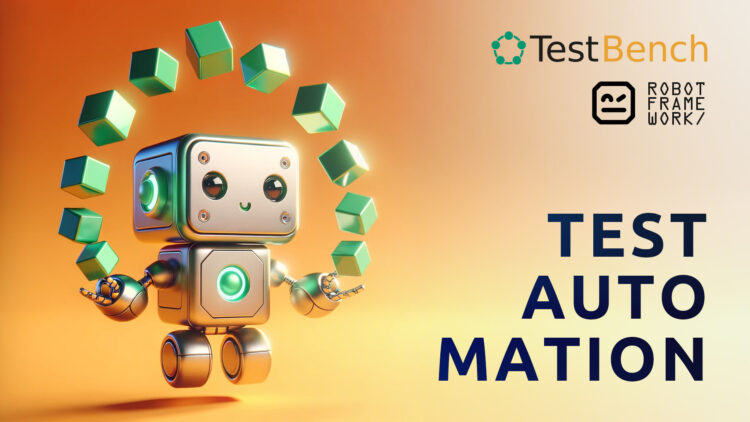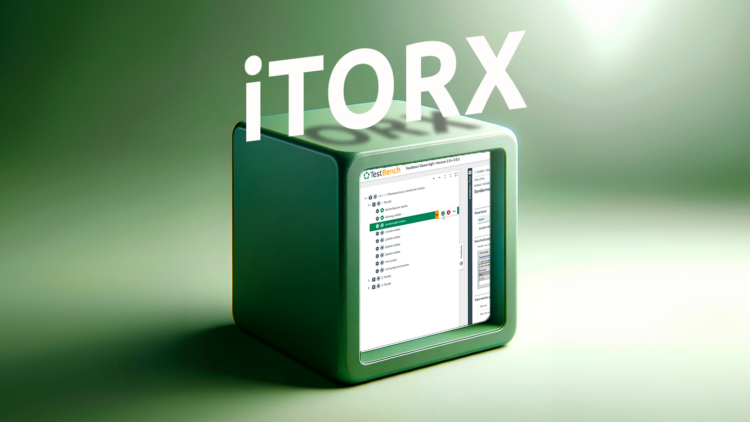
Low Code Test Automation with TestBench and Robot Framework
Discover how TestBench and Robot Framework are revolutionising quality assurance: They overcome discrepancies between test specification and automation, optimise collaboration and enable a seamless test process.
In today’s software development, quality assurance is a critical success factor. One of the biggest challenges here is the frequent discrepancy between the technical test specification and the test automation. These tasks are usually implemented in different tools, which leads to an incomplete overview of the test process, divergent specifications and implemented automations. This media discontinuity also makes coordination between test designers and test automation experts more difficult.
Our goal with the integration of TestBench and Robot Framework is to overcome these challenges and enable a seamless, efficient testing process. TestBench manages keywords in a centralised keyword repository, which simplifies maintenance and ensures consistency. The use of Data Driven Testing in TestBench significantly increases test coverage, as tests with different data variations can be easily performed.
With Keyword Driven Testing (KDT) and Data Driven Testing (DDT) in TestBench, we significantly increase the efficiency of the testing process. Test designers can create new automated test sequences with a low-code approach in TestBench, which not only lowers the barrier for test automation, but also enables faster and more precise implementation. This integration leads to harmonised collaboration between test designers and automation engineers and enables effective and comprehensive quality assurance.
Accelerated test specification with keyword-driven testing
Keyword Driven Testing is a test specification method in which test cases are defined by using keywords that represent specific actions. These keywords abstract the test logic, allowing test cases to be created independently of the actual automation technology. This makes it easier for non-programmers to create and maintain tests, as the keywords are formulated in a language that can be understood by specialised users. KDT promotes the reusability and maintainability of tests, as keywords can be used in different test cases once they have been defined. If keywords need to be adapted, this is only necessary at one central point and has a direct effect on all test cases in which the keyword is used.
Maximising test coverage through Data Driven Testing
Data Driven Testing is a test automation technique in which the same test cases are executed with different input data. This method enables efficient scaling of tests as the test logic is developed only once, while different data variations can be tested. This is done by providing the input data from external sources such as files, databases or tables. DDT increases test coverage and detects potential errors that can be caused by different data combinations without having to change the test scripts themselves.
The synergy of Robot Framework and TestBench
Keywords created in TestBench are converted into executable automation steps by automation specialists. No complete test cases are automated, only the atomic technical steps represented by the keywords. These atomic steps form the building blocks that can be reused in different test cases. This promotes the reusability and maintainability of the automated tests, as the basic actions can be implemented once and used in different contexts.
We use the Robot Framework for automation, which fits perfectly with TestBench’s Keyword Driven Test approach. As an open source tool, Robot Framework offers a flexible and extensible framework that makes it possible to test a wide variety of technologies. By using 3rd party libraries to control the system under test, end-to-end tests can be realised across different applications. This significantly increases flexibility and adaptability. The combination of TestBench and Robot Framework maximises the efficiency and effectiveness of the test process.

Summary: How TestBench and Robot Framework are revolutionising test automation
In our solution, test cases are technically specified in TestBench and converted into Robot Framework test cases for automated execution. The entire planning and management takes place in TestBench, which also enables specialised test designers to compile automated tests from existing steps. The clear interface between test designers and test automation specialists simplifies collaboration considerably, allowing both to focus on their respective strengths – technical expertise and programming.
Automated test execution can be triggered either manually by a human or by integration into CI/CD pipelines. The test results are imported and displayed in TestBench, including the results from manually executed tests.TestBench also offers a special wizard, the ‘iTORX’, for the manual execution of tests.
A major advantage is the simple traceability from requirements to test results. This supports a comprehensive and transparent test strategy.
